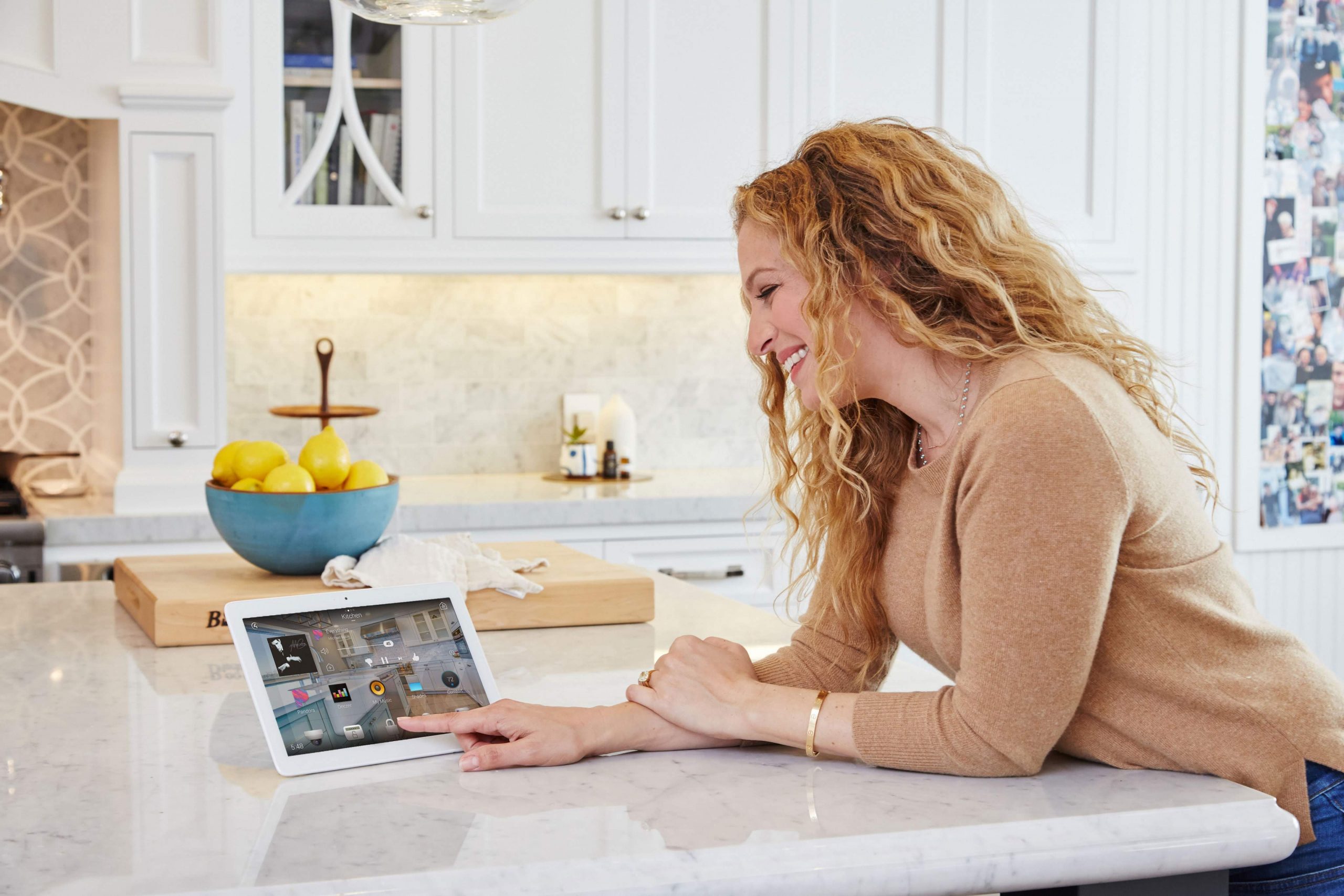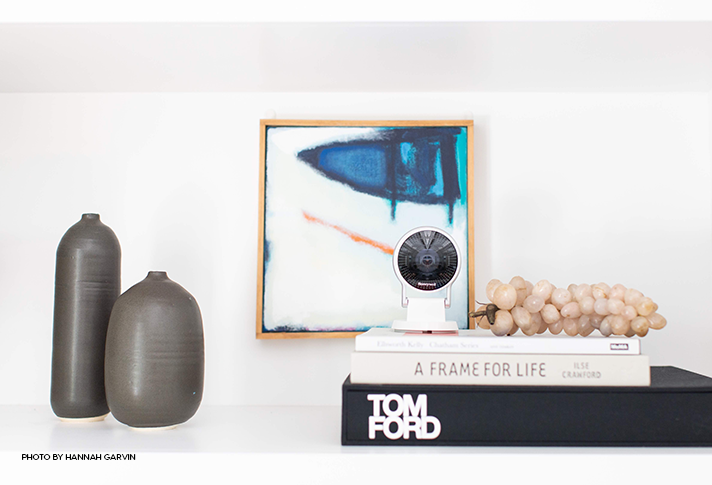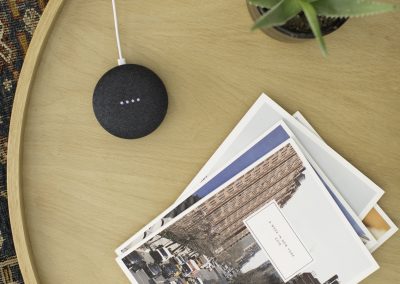Carley Knobloch (aka Carley K) chats about developments in the future of the Smart Home and offers some tips to retailers on how to take the scariness out of Smart products.
by Michelle Hespe
Just like the basis of great industrial design – where it’s all about the creation of products that solve problems and make a person’s life easier – the best type of Smart Home is one that houses smart products that are useful, convenient, look great and give their users more time to concentrate on real life. As a retailer, you need to help your customers understand the new products available and help them determine which ones fit into their lives.
“In retail today, we are returning to the idea that an in-person experience is complimentary to online retail,” says Carley. “We can still benefit from being able to hold something and be around people who can educate us about products. You can order a shoe online, but do you really know how it feels unless it’s on your foot? I sometimes liken it to the proverbial cookie: You see a photo of a cookie, or you might see someone eating it on a video, but the experience of eating it yourself and learning about the ingredients from a knowledgeable person is unparalleled. You want more cookies!”

Carley Knobloch, Photo by Alexis Adam Photography
Carley has built a business and a life around taking the scariness out of smart products, with a focus on guiding and assisting women in their day-to-day lives. She makes it easy for people to understand what smart products can and should fit into their lives. She also makes it easy to take one step at a time into the “smart” world.
“I think we’ve always traded privacy for convenience,” says Carley. “People, companies, have been collecting information, data, for a very long time and it’s gone unchecked. These days, your phone knows where you are, and yet many people feel helpless. ‘I don’t want my phone tracking me like that!’ they’ll say – but in the end there’s little they can do to control the situation… unless they want to stop using their phones.
Carley explains that we need to remember that there is “Smart” and then there is “Intelligent.”
“I, the human being, am the smart and intelligent one. I should know what’s going on and make decisions about my life,” she says. “I should be able to choose smart products to suit my life and make it better for myself and for my family. For instance, look at mood lights now that have different hues for sleep or motivation depending on what time of day it is or what you’re doing. That’s intelligent help. Some of the features, though, can scare people. Like a thermostat that knows when you are sleeping.”
Being a part of a busy family with children who come and go, Carley loves her smart locks. “I love that I can open the garage door from anywhere,” she says. “I might have a furniture delivery while I’m at work, and I can let someone in and then lock it again. You might remember that you left the garage door open and then check that it’s locked. My children all have their own individual passcodes to the lock, so I know instantly who has arrived at home, and who hasn’t. It’s great for a parent, and it makes my life and theirs easier.”

Photo by Alexis Adam Photography
When it comes to Smart Home products, a retailer’s role is to help a customer to evaluate what they need or don’t need, and data gathered from social media and direct marketing can make this easier. However, because their information is being used for marketing to them, consumers are feeling less in control and less trusting as they think their privacy has been violated.
“As a retailer, you need to inform consumers of innovations and keep them in the loop,” Carley says. “To do this, you need to think of personal ways to engage with your customers – such as asking them for a wish list. Get them to think about where there are pain points in their life and then think about the pieces of tech that they might want to fix the problems, or just make life easier.”
Carley explains that the easier you make someone’s life, the more they’ll appreciate you and your business. “Many consumers are fatigued, so you need to help them. There is too much out there to understand, and that’s on top of social media and emails and everything else. Be their helpful friend and you will gain loyalty. Create engaging content. Continue to talk to them. Everyone wants a personal connection.”

Photo by Carley Knobloch
When creating content, Carley says retailers should avoid relying on gimmicks and remain true to their brand. “Speak to customers in a very personal way – they know we can now micro-target so make them feel special. Emotion is still one of the best ways to make people loyal. If there is a connection, people buy things. These people are opening their homes to you, so you have to be respectful of that. They are deeply concerned about their privacy and security. They’re fearful that everything is listening and recording. If you can alleviate their concerns by being transparent, you’ll be ahead of the game.”
As a technology lifestyle guru, Carley says her job is similar to retailers – encouraging people to try one thing at a time that might work for them.
“They might not even know that they needed it!” she says. “For instance, I might encourage someone to try out the Smart lightbulb. They might install one light in a lamp that changes the mood of the room. Then they might decide to install lights that turn on and off at particular times when they are away, so its looks as though someone is at home and deters burglars. They might then progress to lighting a whole floor of the home that is activated by movement and creates a pathway to the bathroom at night. If they keep moving forward with great solutions, everyone’s making progress.”
When a customer takes that first step of trusting a new smart product and what it is doing for them, they also gain trust in you as their preferred retailer. Together you can make more of an inroad into the Smart Home world. One step and one product at a time.
You can check out Carley’s blog here.
––––
So where exactly is the smart home market today, and what will it look like in 2020 and beyond?
by Rachel Crippin Clark
Just two years ago at the International Home + Housewares Show (now known as The Inspired Home Show beginning in 2020), Carley compared the smart home marketplace to the Wild West: A place where everyone was shooting, but not everyone was exactly sure where they were shooting, or why.
Today, “it’s absolutely evolving and straightening itself out,” she says. “As it gets harder to compete with Amazon and Google on smart home, product development companies are finding it easier to align themselves with the leaders from the start. Plus, these companies are seeing the benefits of making products easier for consumers to set up, to sync with other systems and to help solve problems.
“The customer experience is really paramount,” Carley adds. “And I think we’re going to see the continued pursuit of more elegant solutions for consumers and more refinement in existing products.”
The global smart home market is forecast to grow to $53.45 billion (U.S.) by 2022, according to Statista, a leading provider of market and consumer data. They project the total installed base of Internet of Things-connected devices to reach 75.44 billion worldwide by 2025, a fivefold increase in just 10 years.
Household penetration rates are currently highest in the United States, Norway, the Netherlands, Denmark and Sweden, says Statista. Product categories with the highest market share are video entertainment, smart speakers and home security or monitoring devices, according to IDC Worldwide.
As we look to the future, look for smart home devices to become smaller, cheaper and smarter, says Carley. An analogy? The evolution of TV sets or computers.
Some of Carley’s other top trends to watch are:
- Artificial intelligence – This is where products are moving from just being “smart” to actually being “intelligent” and learning as they go along. Think of a toaster that has a sensor that automatically knows you’ve put in a bagel – without you telling it – and toasts it at the right temperature and for the right length of time.
- Cross-compatibility – One of the early lessons in smart home is that consumers “don’t want to get painted into a corner” with every single smart product they own. Look for more sellers to make it easier for products to talk to each other and work across different operating systems.
- Home health – Carley’s excited about the many products coming to market to help consumers improve health and well-being for themselves and their loved ones at home. These include products to help improve air quality and water quality, and many items related to babies, kids and pets.
- Voice control – “The ubiquity and popularity of voice-controlled products is only going to grow,” says Carley. It democratizes the home so that you no longer need a phone or computer to talk to your devices…even grandma can turn off the lights or lock the doors.
- Bathrooms – Yep, they’re pretty much the last room in the house to get some attention in the smart home world. But look for smart lighting solutions, mirrors (that might even share today’s weather!) and bathtubs that autofill so they never overflow.



